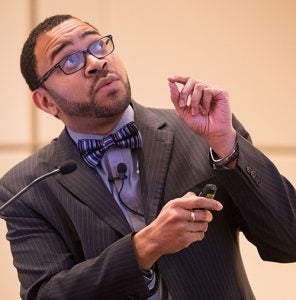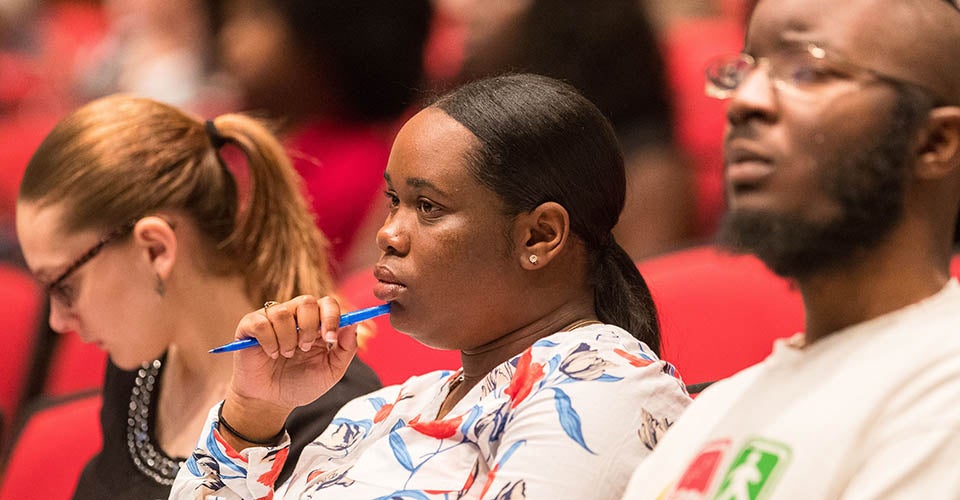DISPARITY DILEMMA
Symposium addresses challenges in achieving health care workforce diversity
Developing a health care workforce that better represents the diverse population it serves was the focus of this year’s Jean Mills Health Symposium, held Feb. 24 at East Carolina University’s East Carolina Heart Institute.
About 90 community members, faculty and students attended the 13th annual event
named after an ECU College of Allied Health Sciences graduate and community health advocate who passed away in 2000.
“It’s about student success, it’s about outreach to the community, and most importantly it’s about transformation of eastern North Carolina,” said Dr. Robert Orlikoff, dean of the College of Allied Health Sciences, which hosted the event. “In short, what this symposium addresses are the three major portions of our mission at ECU.”
Orlikoff said the theme of this year’s symposium points directly at an issue facing the region.
“Frankly, we have a long way to go,” Orlikoff said. “One of the reasons that I’m delighted to be the dean of the College of Allied Health Sciences is because of my ability to play a role in that effort. It’s one of the things that drives me and I know drives our faculty and the Division of Health Sciences and the university,” he said.
The event included poster presentations, panel and roundtable discussions and several speakers.

Keynote speaker Dr. Kendall Campbell, the Associate Dean for Diversity and Inclusion at the Brody School of Medicine speaks at the 2017 Mills Symposium.
Dr. Kendall Campbell, associate dean for diversity and inclusion and director of the Research Group for Underrepresented Minorities in Academic Medicine at the Brody School of Medicine, gave a keynote speech. He contrasted the concepts of equity and equality, explored reasons why minorities are underrepresented in academic medicine and posed suggestions for addressing inequality.
Campbell stated that equity, not equality, should be the goal. Equity, he said, better accounts for the different needs of individuals while equality means everyone gets the same thing regardless of their unique needs.
“To give you a practical example,” Campbell said, “I decided that I want to buy everyone in here a pair of shoes. And they’re all going to be size 6.”
When equity is achieved, he said, health disparities will be eliminated. In health care, that means valuing all individuals equally, recognizing and rectifying injustices and providing resources according to need.
Achieving health equity is dependent upon first achieving workforce equity, Campbell said, citing examples of what drives minorities away from academia and what can be done to alleviate those problems and bolster recruitment of underrepresented minorities.
“After about five years, (minority faculty) get frustrated, they’re fatigued, they’re overworked and they leave academic medicine to go to private practice to make more money and have less headaches.”
Campbell pointed to six reasons for poor representation of underrepresented minorities in faculty: clinical responsibility disparities, diversity pressure, isolation, lack of mentorship, promotion disparities and racism.
To promote retention and increase recruitment of underrepresented groups, Campbell said, health care leaders should focus on addressing systems that create a frustrating environment for minorities. Solutions will include acknowledgement and communication about the problems that exist, leadership with a vision and a commitment to institutional and policy-level change.

Mills Symposium attendees listen to the keynote speech by Dr. Kendall Campbell.
